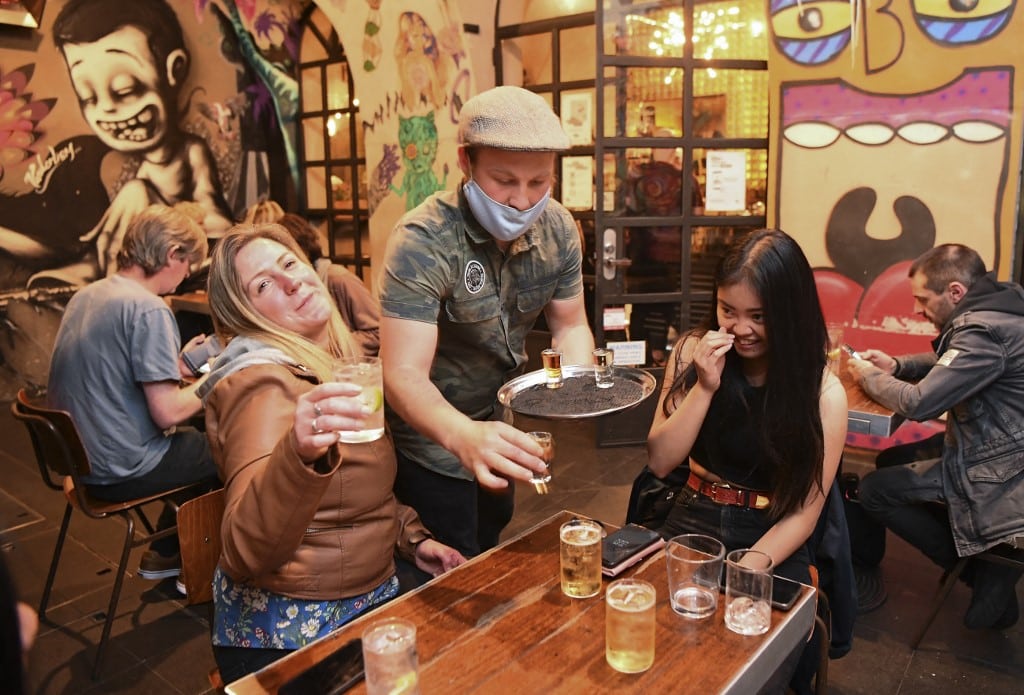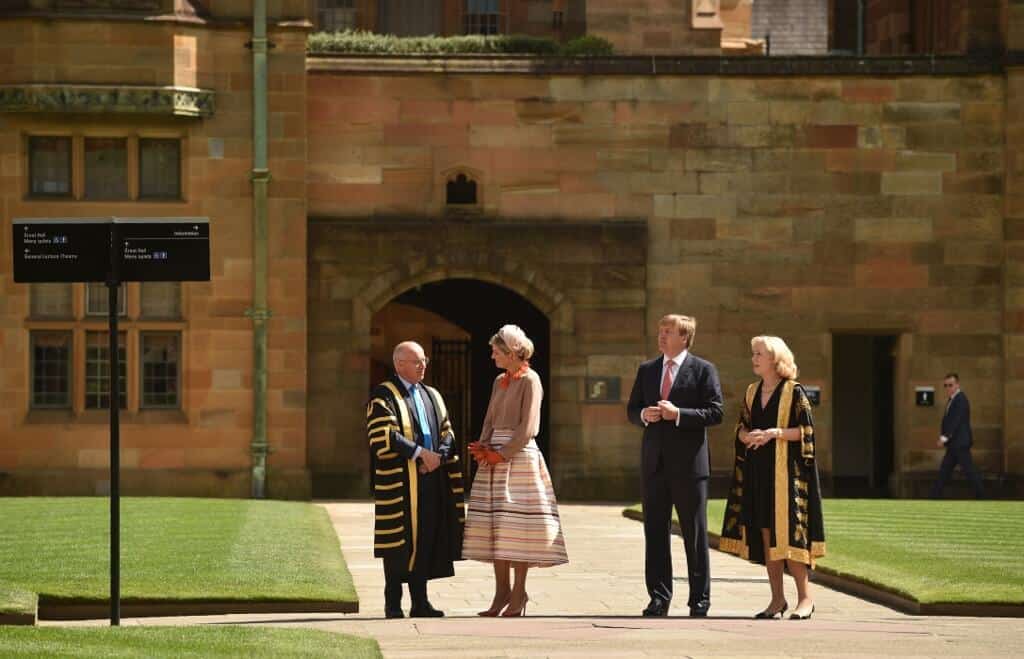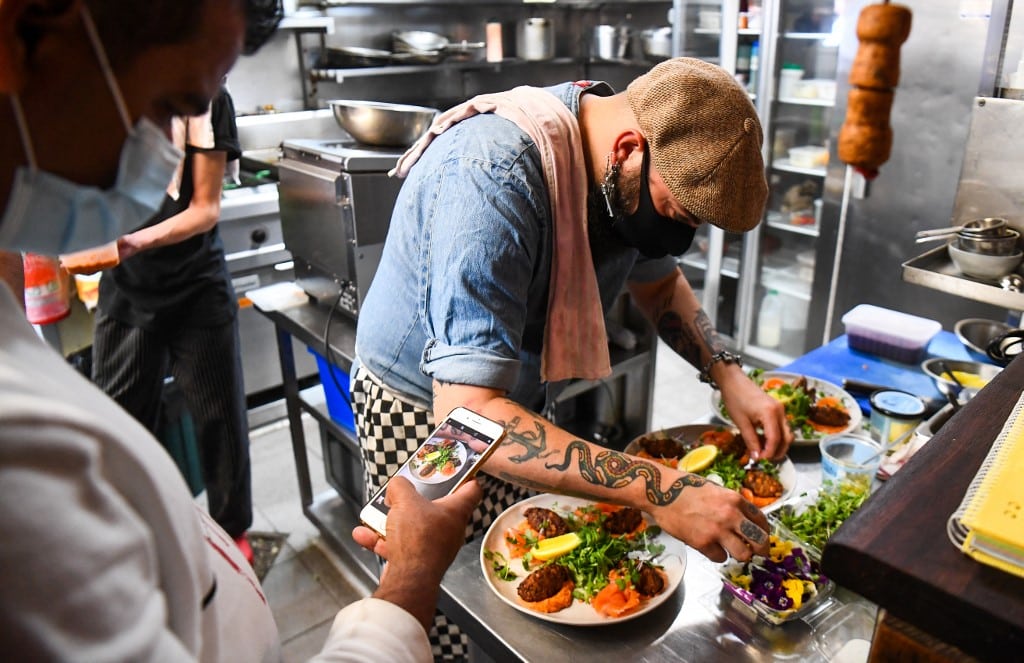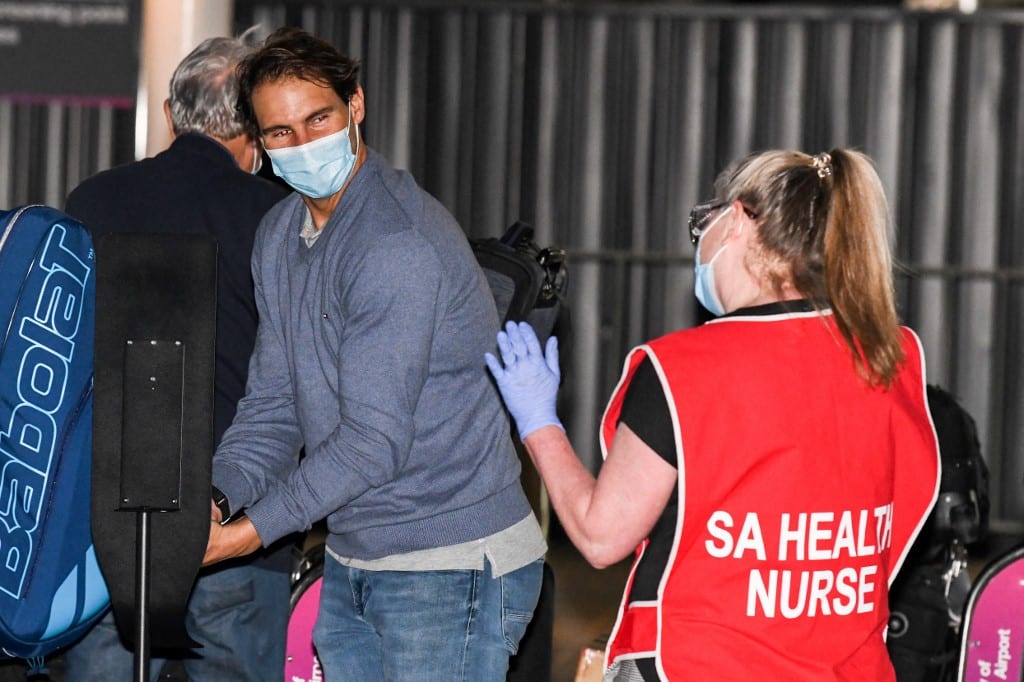
A bachelor’s degree from an Australian university costs between US$13,370 and US$30,084 at the time of writing.
Many require minimum scores of 65% and above in class XII (for Indians), 50% marks in an Australian foundation programme or CCC in A Levels.
It can be expensive and tough to get into an Australian degree programme — that you may not even be passionate about in the first place.
That doesn’t mean you have to kill your dream to study in Australia. What many international students overlook is an alternative to three-year degrees: vocational courses.
The best vocational courses in Australia offer a solution to those seeking a more skills-based, more direct pathway to a job — all while experiencing the finest the Land Down Under has to offer.

Achieve one of the best vocational courses in Australia and you could set yourself up for a life and career in this popular country. Source: William West/AFP
Vocational courses vs traditional degrees
Vocational courses, or VET (which stands for vocational education and training), offer students the chance to learn specific and practical job skills.
Arguably, it’s an ideal route for international students who are looking for a faster path into the workforce and a focus on real-world or industry-based skills.
Registered Training Organisations (RTOs) provide vocational courses in Australia.
RTOs include Technical and Further Education (TAFE) institutes and private colleges, which also include specialised colleges such as technical colleges.
Some universities may offer vocational courses on top of the traditional degree courses.
RTOs offering their courses to international students must also register with the Commonwealth Register of Institutions and Courses for Overseas Students (CRICOS).
You can find a full list of CRICOS-registered providers on the CRICOS website.
How long is a vocational course in Australia?
That depends on the VET qualification you want to pursue.
You can choose from four levels of certificates (Certificate I, II, III and IV), as well as Diploma courses and Advanced Diploma courses, according to the Australian government’s website.
Here’s what the website says about how long it takes to complete each qualification and the career outcomes:
Certificate I
- Duration: Four to six months
- Career outcome: Competent operator
Certificate II
- Duration: About one year
- Career outcome: Advanced operator
Certificate III
- Duration: About one year
- Career outcome: Qualified tradesperson or technician
Certificate IV
- Duration: 12 to 18 months
- Career outcome: Supervisor
Diploma
- Duration: 18 to 24 months
- Career outcome: Para-professional
Advanced Diploma
- Duration: 24 to 36 months
- Career outcome: Junior manager

The University of Sydney is one of the top public unis in Australia, where tuition can go as high as A$86,000 Source Peter Parks/Pool/AFP
What is the difference between TAFE and a university in Australia?
Vocational courses offered by RTOs like TAFE generally focus on the practical skills you need for specific industries.
You’ll be trained in what industries like business, cybersecurity, accounting, and many more need in their daily operations and less on the more academic side of what they do.
In contrast, higher education institutions like unis strongly emphasise theory and analysis.
The qualification you’ll attain differs too. Unlike VET, a traditional degree lets you work your way up to getting a PhD in uni.
It’s also cheaper to pursue a VET qualification in Australia.
Take Certificate III in Commercial Cookery, for example. You can expect to pay A$15,920 (US$10,643 at the time of writing) to pursue this course in Ipswich.
Pursuing a Bachelor in Culinary Management at the William Angliss Institute would set you back A$61,750 (US$41,283).

If you want to become a chef, consider joining one of the best vocational courses in Australia’s TAFE institutions. Source: William West/AFP
What are the entry requirements for vocational courses in Australia?
Do check with your vocational course provider if there are specific entry requirements that apply to you as an international student.
Take TAFE Queensland, for example. Some vocational courses require demonstrating your English proficiency by providing the relevant test results, such as IELTS or TOELTS.
Some VET might require completing a certain level of education, while others have no prerequisite.
Can I stay and work in Australia after completing my vocational course?
You can if you meet certain requirements listed on the Australian government’s Department of Home Affairs website that you must meet.
The visa you should aim for is a Temporary Graduate visa (subclass 485) post-study work stream.
Each qualification you have completed and are relying on to meet this requirement must:
- be either a bachelor’s degree or higher, a diploma, an advanced diploma, or a trade qualification
- have been undertaken at an Australian educational institution in Australia
- have been taught in English
- be registered on CRICOS
- have been undertaken while you held a visa authorising you to study
You must complete two academic years of study (92 weeks), contributing towards one or more acceptable qualifications.
You must also provide evidence of the following:
- adequate health insurance
- you have applied for an AFP check (a national police check)
- achieve a minimum score in various English language proficiency tests — click here to view the list of approved tests

The best vocational courses in Australia range from IT, nursing, business, culinary arts, and many more. Source: Sebastien Bozon/AFP
The 12 best vocational courses in Australia
There’s not necessarily one best school to pursue a vocational course, so we narrowed down a few institutions if you are looking to gain practical knowledge in a particular field.
Nursing
- Diploma in Nursing, TAFE Queensland (A$23,505/ US$15,703.10)
- Diploma in Nursing, TAFE International Western Australia (A$31,365/ US$20,954.17)
- Diploma in Nursing, UOW College Australia (A$29,000/ US$19,374.17)
Cooking
- Diploma of Hospitality Management, TAFE Queensland (A$29,600/ US$19,775.02)
- Diploma of Hospitality Management, Victoria University Polytechnic (A$6,500/ US$4,342.49 per semester)
- Diploma of Hospitality Management, TAFE International Western Australia (A$8,530/ US$5,698.68 )
Business
- Diploma of Business, TAFE Queensland (A$11,150/ US$7,449.04)
- Diploma of Business, TAFE International Western Australia (A$6,400/ US$4,275.68)
- Diploma of Business, TAFE SA, (A$6,048/ US$4,040.52)
Information Technology
- Diploma of Information Technology – Advanced Networking and System Administration, TAFE Queensland (A$16,960/ US$11,330.55)
- Diploma of Information Technology, TAFE NSW (A$10,000/ US$6,680.75)
- Diploma of Information Technology, Kangan Institute (A$19,520.7/ US$13,041.29)

A Diploma in Nursing, one of the best vocational courses in Australia, will qualify you to seek registration as an Enrolled Nurse. Source: Brenton Edwards/AFP
What do you learn in these vocational courses?
1. Diploma in Nursing
With this diploma, you’ll develop your expertise in clinical assessments, nursing care for individuals with complex needs, medication and IV therapy administration and monitoring, and evidence-based practice research.
At most TAFE institutions, a team of seasoned industry professionals will support and mentor you throughout your journey.
Upon completion of what’s known as one of the best vocational courses in Australia that can lead to permanent residence, you’ll get a seamless transition into the healthcare sector.
2. Diploma of Hospitality Management
This programme can set you up to be a manager in the hospitality industry.
It covers financial management, regulatory compliance, rostering, stock purchasing and control, to name a few.
Upon completion, you will gain the practical skills needed to work as a functions manager, restaurant manager, or front office manager.

One of the best vocational courses in Australia, a Diploma of Hospitality Management prepares you to join an industry in need of more workers. Source: David Gray/AFP
3. Diploma of Business
Are you looking to elevate your skills at a management or executive level?
Through this vocational course, you can engage with expert teaching staff with a high degree of industry connection.
With their expertise, you can develop specialised knowledge in workforce planning management, learn to communicate with influence, and manage different projects.
4. Diploma of Information Technology
You learn how to install and manage complex IT networks, configure and manage virtual computing environments, and manage network security.
You will also develop the skills required to install an enterprise virtual computing environment.
It’s known as one of the best vocational courses in Australia as it sets you up for jobs like developer programmer, which is an occupation that qualifies for a Temporary Graduate visa (subclass 485).









